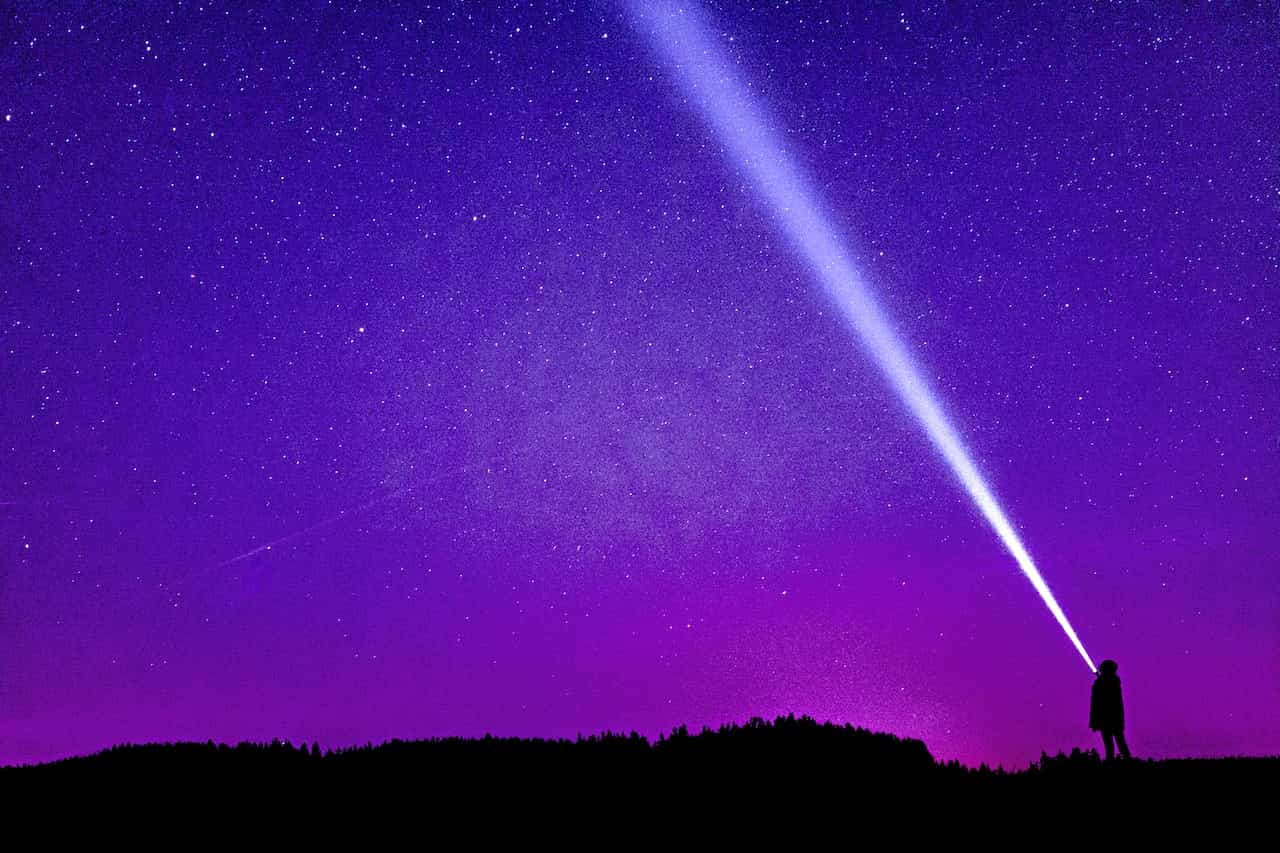The question of whether we are alone in the universe has fascinated humanity for centuries. From Elon Musk to ISRO scientists and spiritual guru Sadhguru, many have pondered the existence of extraterrestrial life. Movies, conspiracy theories, and alleged sightings of UFOs have only fueled this curiosity. In this article, we’ll delve into the mysteries of the universe, the Fermi Paradox, and the ongoing search for alien life.
The Fermi Paradox: Where Are They?
The Fermi Paradox, named after physicist Enrico Fermi, poses a perplexing question: If the universe is vast, with billions of galaxies, each containing billions of stars and potentially even more planets, why haven’t we found any signs of intelligent extraterrestrial life?
The Immensity of Our Universe
To truly appreciate the scope of the universe, consider this: our observable universe spans an astonishing 93 billion light-years in diameter. Within it, scientists estimate the existence of around 2 trillion galaxies, each home to approximately 100 billion stars. This equates to an astronomical number of planets, estimated to be around 10^25.
| Universe Size | 93 billion light-years | | Galaxies | 2 trillion | | Stars per Galaxy | 100 billion | | Estimated Planets | 10^25 |
With such mind-boggling numbers, it’s challenging to argue against the possibility of life existing beyond Earth. Yet, we have no conclusive evidence of extraterrestrial civilizations.
The Goldilocks Zone: Conditions for Life
The quest for extraterrestrial life isn’t just a matter of numbers; it also depends on specific conditions. Scientists look for planets in the “Goldilocks zone” or habitable zone around a star. This zone offers the right temperature for liquid water to exist, a crucial ingredient for life as we know it.
Consider Earth’s position in our solar system. It’s located approximately 150 million kilometers from the Sun, perfectly positioned in the Goldilocks zone. Astrophysicist Michael Hart’s research further underscores the importance of this zone, suggesting that a slight variation in Earth’s distance from the Sun would render our planet uninhabitable.
| Parameter | Earth’s Value |
|---|---|
| Earth’s Distance from the Sun | 150 million km |
| Habitability Zone | Goldilocks Zone |
| Importance of Zone | Vital for Life |
The Drake Equation: Estimating Alien Civilizations
To gauge the likelihood of extraterrestrial civilizations, scientists have formulated the Drake Equation. This equation attempts to estimate the number of technologically advanced civilizations in the Milky Way galaxy alone. However, it relies on numerous variables, many of which remain unknown.
While the Drake Equation offers a structured approach to the problem, the challenge lies in determining accurate values for its variables. As of now, we lack sufficient data to confidently estimate these values.
The Great Filter: Why Haven’t We Found Them Yet?
Despite the vastness of the universe and the potential for life-supporting planets, the Fermi Paradox persists. Some theories propose that the reason we haven’t made contact with extraterrestrial civilizations is due to the “Great Filter.”
The Great Filter Model
The Great Filter is a hypothetical concept suggesting that there are significant barriers or obstacles that prevent civilizations from progressing to the point of interstellar communication. These barriers could be challenges like climate change, catastrophic events, or technological self-destruction.
| Scenarios for Civilization Growth | The Great Filter |
|---|---|
| Die-Off Model | Population growth leads to environmental collapse. |
| Sustainability Model | Population reaches a stable equilibrium with the environment. |
| Collapse Model | Rapid population growth depletes resources, leading to a collapse. |
| Collapse with Resource Change Model | Population growth triggers environmental change, but changes fail to save the civilization. |
As we examine these scenarios, it becomes clear that our own civilization faces threats similar to those outlined in the Great Filter model. Climate change, resource depletion, and the potential for self-destruction through advanced technology all loom as significant challenges.
The Urgency of Sustainable Progress
Paul Elrich, a scientist at Stanford, emphasizes that our civilization’s current trajectory may not be sustainable. Our consumption of resources far exceeds the Earth’s capacity to regenerate them. To maintain our current lifestyle, we would require the resources of approximately five Earths. This imbalance raises concerns about the long-term viability of our civilization.
The Simulation Hypothesis: Are We Living in a Computer Game?
The Fermi Paradox raises questions not only about the existence of extraterrestrial life but also about our own reality. Some scientists and philosophers have proposed the Simulation Hypothesis, suggesting that our universe might be a computer simulation created by an advanced civilization.
Nick Bostrom’s Theory
Nick Bostrom, a philosopher at Oxford University, posits that there’s a 20% chance we are living in a computer simulation. He argues that as technology advances, civilizations may develop the capability to create highly realistic simulated worlds. If this happens, we could be living in one of those simulations, unaware of the true reality.
The Consequences of Simulation
If the Simulation Hypothesis holds true, it implies the existence of a higher intelligence or entity responsible for creating our simulated universe. This concept bears intriguing parallels to religious beliefs in a divine creator or higher power.
| Simulation Hypothesis | Implications |
|---|---|
| Existence of a Creator | Parallel to Religious Beliefs |
| Perceived Reality vs. True Reality | Fundamental Question |
| Advancement of Technology | Potential for Simulated Realities |
The Search for Alien Biosignatures
In our quest to detect extraterrestrial life, scientists are continually developing new methods and technologies. One promising approach is the search for alien biosignatures – indirect evidence of life’s presence.
Chemical Biosignatures
Just as wildlife leaves tracks and traces in their environment, life can leave chemical biosignatures on planets, moons, or celestial bodies. These biosignatures include biological molecules like lipids, carbohydrates, nucleic acids, and proteins. Identifying such molecules on another planet could indicate the presence of life.
| Search for Alien Life | Chemical Biosignatures |
|---|---|
| Traces of Biological Molecules | Indirect Evidence of Life |
| Complex Analytical Techniques | Technological Advances |
However, there’s a significant challenge: we’re limited by our knowledge of life as we know it. If alien life differs significantly from Earth’s biology, our methods for detecting biosignatures might prove inadequate.
The Possibility of Solitude: Are We Truly Alone?
Despite the optimism surrounding the search for extraterrestrial life, some scientists suggest that we might indeed be alone in the universe. A paper titled “Dissolving the Fermi Paradox” proposes that, based on current astrobiological knowledge, there’s a 39-85% chance that we are the only intelligent civilization in our observable universe.
| Possibility of Solitude | Current Astrobiological Knowledge |
|---|---|
| Existence of Intelligent Life | Uncertain (39-85% Probability) |
| The Enigma Persists | Fermi Paradox Unsolved |
This viewpoint stems from the lack of concrete evidence supporting the existence of extraterrestrial life. While the universe’s vastness makes the existence of other civilizations plausible, the absence of contact raises intriguing questions about our solitude.
Conclusion: Embracing the Unknown
The quest to answer the age-old question of whether we are alone in the universe remains shrouded in mystery. The Fermi Paradox challenges our understanding of the cosmos, while the Great Filter model warns of potential pitfalls for civilizations. The Simulation Hypothesis adds an intriguing layer of complexity, blurring the lines between reality and simulation.
As we venture further into the cosmos and develop more sophisticated methods of exploration and detection, the search for alien life continues. While we have yet to find definitive proof of extraterrestrial civilizations, the universe’s vastness and our boundless curiosity keep us searching.
In the end, whether we discover intelligent life beyond Earth or remain in splendid isolation, the journey itself is a testament to human ingenuity and the unquenchable thirst for knowledge. Our quest for answers to the Fermi Paradox reminds us that, in the vast expanse of the universe, the greatest mysteries are yet to unfold.
Disclaimer: While this article explores various theories and possibilities, the existence of extraterrestrial life remains an open question with no conclusive evidence to date. The viewpoints presented are speculative and subject to ongoing scientific inquiry.













